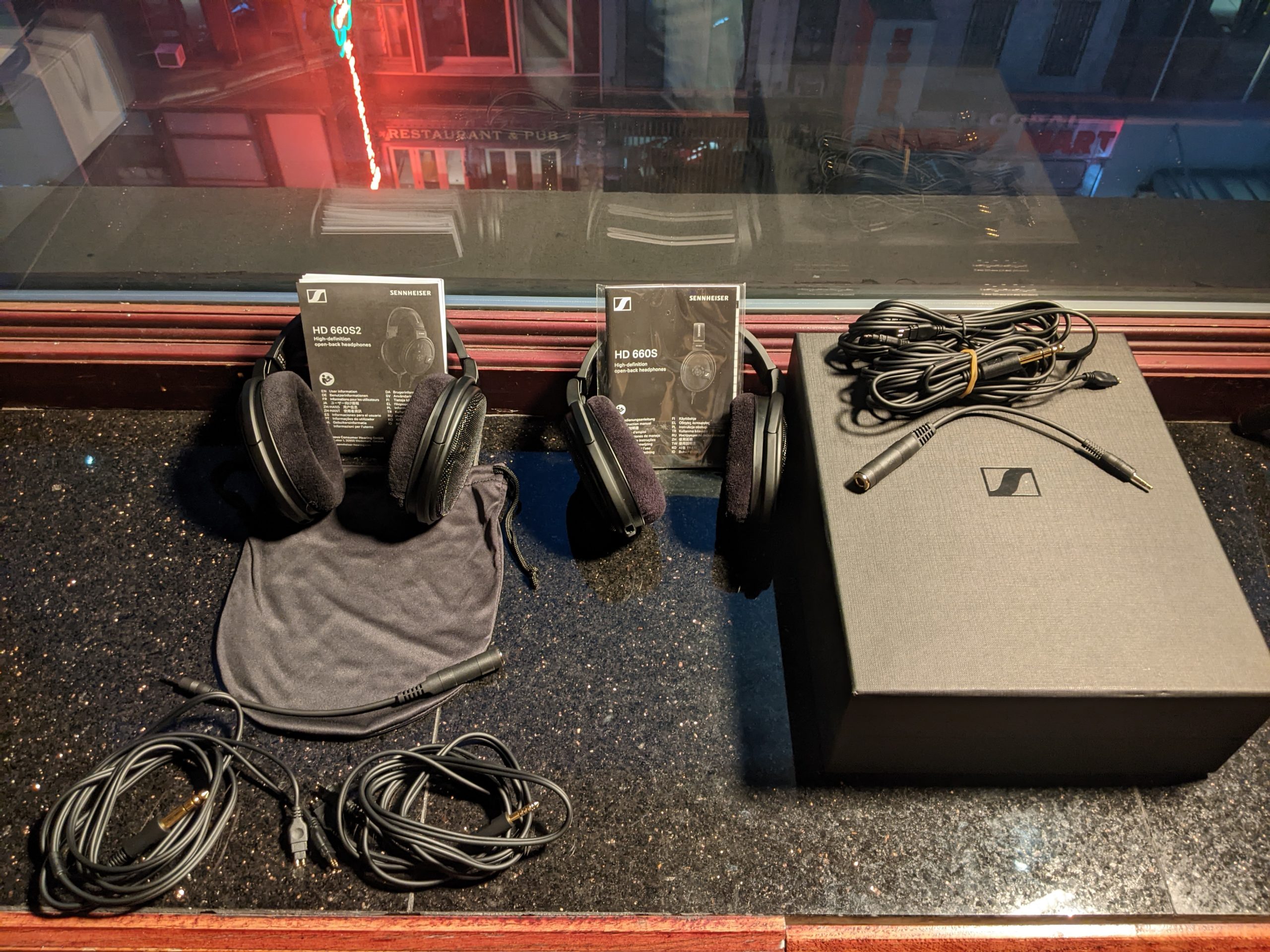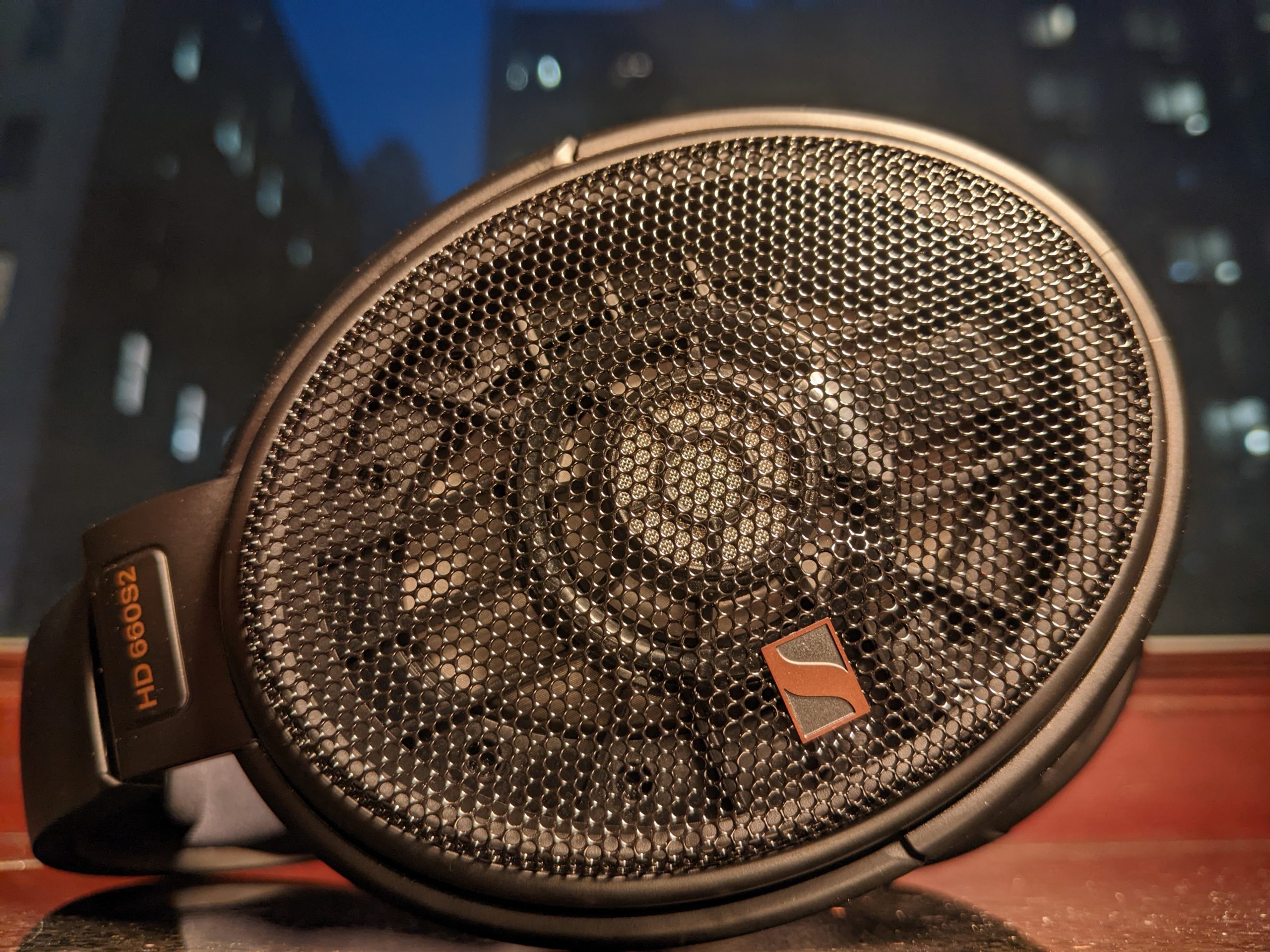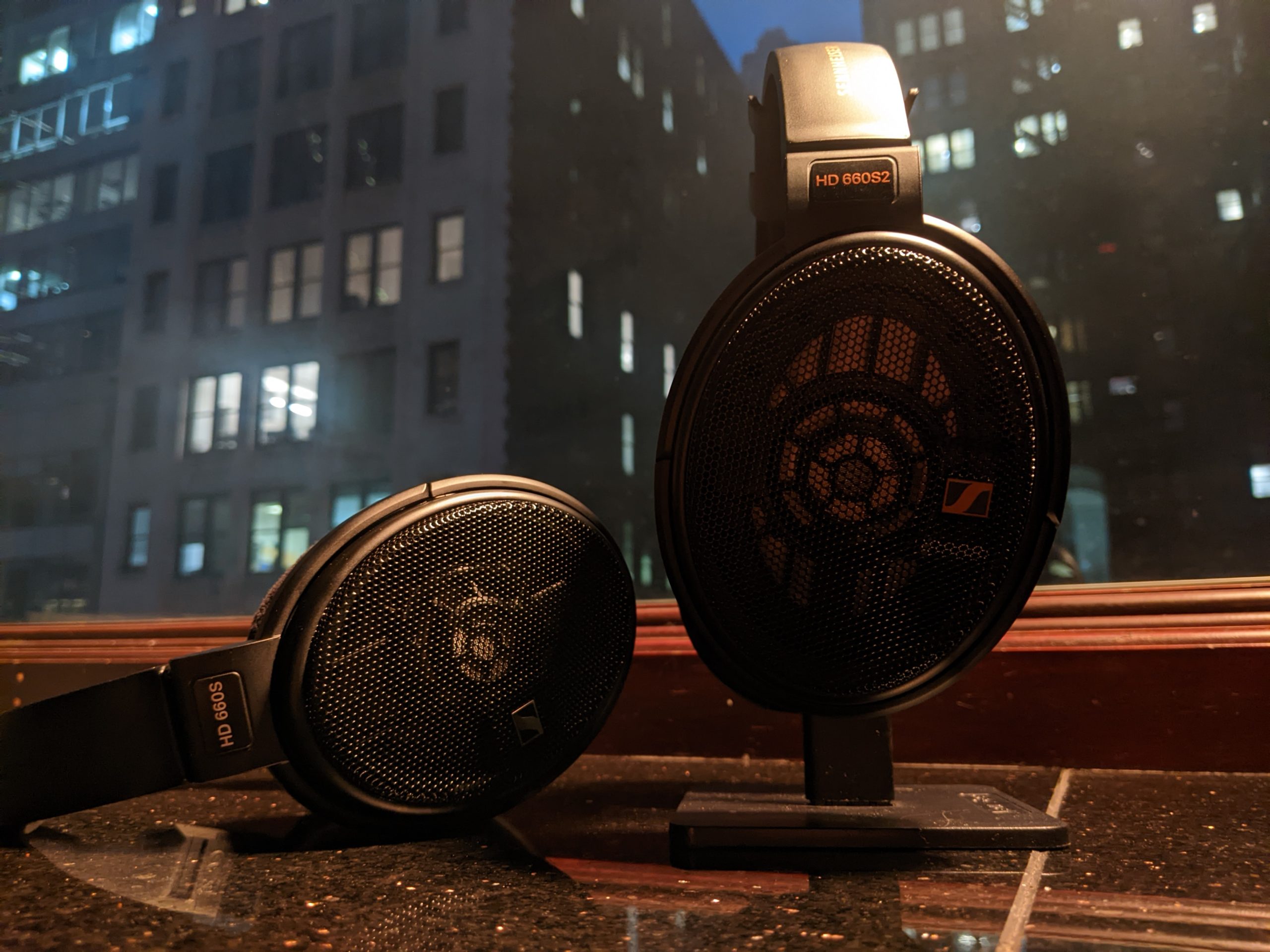Sennheiser HD 660S2 vs. HD 660S Review
The day is here, the Sennheiser HD 660S2 is in my hands, and I have to admit: this review is a little intimidating to write. Sennheiser’s open-back HD 660S headphones have become some of the most praised and recommended mid-fi headphones for their exceptional reference-grade sound quality and fairly affordable price tag. Now, as many readers are likely very well aware, Sennheiser has come out with a second generation of their HD 660S open-back headphones: the HD660S2. A lot has stayed the same, but there are some key differences that I’ll be going over in this review. Let’s take a look inside the box, talk some physical and technical design, and finally, get into what gives the HD660S2 fairly different sound from the original HD 660S.
What’s In the Box?

| Sennheiser HD 660S2 | Sennheiser HD 660S |
|
|
Look and Feel

The differences here aren’t particularly vast. The most significant one is that the HD 660S comes in a big, bulky storage case, while the 660S2 comes with a soft carrying pouch. On the one hand, this made the unboxing experience of the HD 660S2 a little less dramatic than that of the HD 660S. However, the carrying pouch ultimately seems a little more appropriate for a headphone like the 660; as I’ve already mentioned, the 660S/S2 are closer to being a high quality everyday-use pair of headphones than an ultra-premium pair to be locked away in a protective case. I ultimately feel ambivalent towards the change – some people will care more about this than others.
The HD 660S2 also comes with significantly shorter cables the the HD 660S – another indicator that Sennheiser seems self-aware of the more everyday-use reputation that the 660S has earned over the years. As for cosmetic differences, the main one (and only one, to my eyes) is that the HD 660S2’s text and logo has a bronze color instead of the silver, steely color we see on the 660S. I’m a fan of the new, warmer color, and think it’s appropriate for the bassier balance we hear on the HD 660S2.
When it comes to fit, they’re just about the same. Fairly lightweight, with comfy velour earpads that offset some of the intense clamp pressure imposed by the plastic frame. The memory foam on the underside of the headband also remains unchanged.
Technical Design and Specs
As one would hope, Sennheiser has made some technical improvements with the HD 660S2. According to Sennheiser, the airflow around the transducer has been optimized, resulting in a greater sensitivity. We also see a change in impedance: the HD 660S2 comes in at 300 ohms, while the impedance of the S1 is 150 ohms. Finally, and perhaps the most exciting change we see, is the new tuning on the S2: a little more treble, and significantly more extension on mid and sub bass. More on that shortly.
| Spec | Sennheiser HD 660S2 | Sennheiser HD660S |
| Principle/Driver | Open-back, Dynamic | Open-back, Dynamic |
| Impedance | 300 ohms | 150 ohms |
| Frequency Response | 8 Hz – 41.5 kHz | 9 Hz – 41.5 kHz |
| Sensitivity | 104 dB/SPL | 104 dB/SPL |
Soundstage
Though I heard most of the differences between the S and S2 in their balances, there are some subtle improvements that I heard in the 660S2’s staging. There seems to be a slight improvement in depth in the peripherals of the stage – more subtle left and right pans maintained a better sense of distance and proximity. More specifically than soundstage, I heard notable improvements in imaging – pans generally felt a bit faster and more fluid. Overall, it takes a pretty careful and critical listen to truly notice these differences. The HD 660S has an excellent stage that’s particularly wide and fairly deep – the S2 makes some subtle changes, but is very obviously following the same formula. If you want to hear where the S2 stakes its changes, we have to look towards the balance.
Lows
The extra extension on the Sennheiser HD 660S2’s mid and sub bass has probably been the unit’s most hyped detail ever since Sennheiser released its frequency response chart. I too looked at that graph with some excitement, as the bass response on the HD 660S was perhaps my least favorite part of the headphone’s sound profile – I know, reference headphones aren’t supposed to have fun and exciting bass. But all things considered, I can’t help but feel like the 660S sold itself a little too short in its lows, teasing me with trace moments of rumble. I’m happy to say that the 660S2’s bass doesn’t disappoint – in fact, it’s awesome. Despite what anyone thinks about what sub and mid bass can do to a reference balance, the extended bass on the HD 660S2 fits like a lost puzzle piece. The lows end up sounding more natural, and don’t congest in the mid-high bass like I thought they did in the S1. There’s a more prominent rumble now, which flowed through the velour earpads and slathered the outside of my ears with vibrations.
This louder low end doesn’t detract from the HD 660’s status as a reference headphone – in fact, I found it further enhanced its realism, and made it more enjoyable for casual listening.
Mids
Center frequency balance is likely what has changed the least with the Sennheiser HD 660S2 from the S1. Thought there’s a little more low mid amplitude and warmth with the S2, I perceived this extra boost as an extension of the changes made to the low end rather than significantly changing how I heard the mids balance proper. At the end of the day, a headphone going for a reference balance only has so many options for what it can do with its center frequencies: keep them flat, or keep them nearly flat. Aside from somewhat boosted low mids, the S2 shares the S1’s flat center mids and high mid to mid treble ramp. The neutral presentation of vocals, guitars, and drums prove that the HD 660S2 is still a recording-studio-worthy headphone.
Highs
Something tells me that the S2’s treble balance is going to be the most divisive change that has been made. To put it simply, it possesses an aggressive smack unlike the more forgiving, carefully carved treble we heard on the HD 660S. The exciting bass response on the S2 might tempt listeners to pump the volume a little louder than they usually would, but the new treble response is as likely to keep that impulse in check. More so than the changes made to the low end, the bold high frequency emphasis in the S2 is where the headphone finds some extra color and character, straying from the more neutral path taken in the HD 600S. Parts such as hand claps and hi hats take on a much more forward and risky character, while synths find some extra teeth in their buzzy overtones.
Overall

Sennheiser’s HD 660S2 seems like company’s decades-in-the-making response to the original HD660S: “Oh, I didn’t know you would like that so much; well what do you think of this?” The S2 does more than just offer a reference balance that packs in more audio information while maintaining the clarity of the original: it provides a distinctly modern tuning. The newfound emphasis in the lows and highs alike offers the impactful satisfaction of V-shaped tunings without sacrificing its natural mid range amplitude and clarity. More mainstream listeners can get the most out of the aggressive lows and snappy highs, while jazz, rock, or just general alternative listeners won’t suffer from an overly-boomy or obfuscating balance. Sennheiser’s changes to the OG HD 660S do it justice; it’s more fun this way, and no less accurate. The S2 follows the original’s fundamental formula, but provides enough welcome difference to give owners of the S1 a good reason to check it out.
The Sennheiser HD 660S2 can be ordered here from Audio46. The Sennheiser HD 600S can be purchased here from Audio46.
Compare the ranking of various headphones, earbuds and in-ear monitors using our tools.
Discuss this, and much more, over on our forum.
---MAJORHIFI may receive commissions from retail offers.













